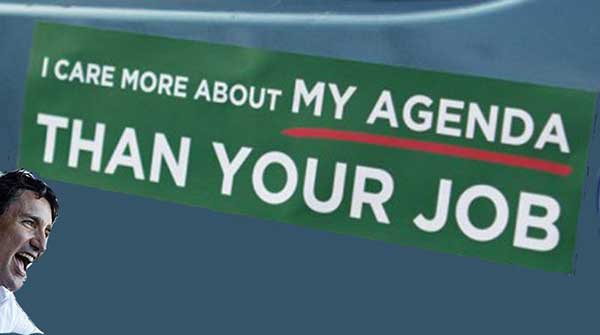 What does another Trudeau win mean for Western Canadians? After all, the actual composition of the House of Commons changed little, and once again, the Liberals will need the support of either the NDP or the Bloc Quebecois to pass legislation.
What does another Trudeau win mean for Western Canadians? After all, the actual composition of the House of Commons changed little, and once again, the Liberals will need the support of either the NDP or the Bloc Quebecois to pass legislation.
So, for the most part, we can expect a continuation of some programs, including COVID support for workers and businesses, affordable daycare and a continued focus on climate change and what that means for energy and agriculture.
The Trudeau government will continue to prioritize a restart to the economy and support for the recovery. This means support programs for workers and businesses affected by the COVID-19 pandemic are likely to be extended, especially considering the country’s current fourth wave of infections. This will be welcomed in Alberta, where the severity of the fourth wave will lead to a temporary weakening of the economy – something already visible in real-time economic data.
 One area where we are likely to see some new policies is housing, courtesy of a likely expansion of the first-time buyer’s incentive. While affordability is not an issue in most Western provinces except for British Columbia, many households are likely to benefit from such programs.
One area where we are likely to see some new policies is housing, courtesy of a likely expansion of the first-time buyer’s incentive. While affordability is not an issue in most Western provinces except for British Columbia, many households are likely to benefit from such programs.
With the Liberals back in power, the recently announced affordable daycare program will remain in place. The Alberta government will now be under pressure to negotiate a deal on funding for the program in the province.
The affordable daycare program is a significant and positive economic policy. The lack of childcare has disproportionally affected women during the pandemic, reducing their career prospects, skills and financial well-being. Quebec’s experience with affordable daycare, a similar program to that envisioned by the Trudeau government that has been in place since the late 1990s, has raised the employment rate of women aged 25 to 55 years old to 83 percent, the highest in Canada. Alberta, on the flip side, is amongst the lowest in the country at 78 percent. A convergence to Quebec’s level would mean about 50,000 more women in employment.
Women’s participation in the economy will be crucial in the coming years, especially with the gradual ageing of the population and retiring baby boomers. A higher presence of core working-age women will help replace retiring workers and retain their skills. Moreover, more women staying employed while having kids will mean less loss of skills and a smaller impact on their long-term professional prospects. Ultimately, this will raise the country’s potential growth and long-term prosperity.
Protecting the most vulnerable from the coming energy crisis by Heather Exner-Pirot
The Trudeau government’s main economic impact on western provinces is likely to come from its continued commitment to fight climate change. However, it is important to note that this is not a Canadian-centric policy but a global imperative. The continuation of the current framework, centred on a carbon tax, should bring some policy certainty for the energy sector and clarity when deciding future investments.
However, the federal government needs to clarify how it intends to help the workers affected and displaced by the energy transition and decarbonization. Similarly, some regions are also likely to be disproportionately affected by the transition.
The current energy crisis in Europe highlights the need to be careful with energy transition, i.e. emphasis should be on rotating demand away from high emission sectors, not just curtailing supply. The situation in Europe shows the need to boost the supply of renewable energy and keep energy security in mind. But the federal government needs to provide more detail on how it intends to promote and attract investment in green energy in western provinces. There is immense wind, solar and geothermal potential in those provinces that remain underdeveloped and a great source of economic opportunity.
Climate change and the need to reduce greenhouse gas emissions are not just about the energy sector. The agricultural sector is also facing a transition cost. First, the carbon tax adds to operating costs for the industry. Second, the agricultural sector emissions are growing, with the sector responsible for about 10 percent of Canada’s emissions. Investment in new technology will be needed to reduce the carbon footprint and GHG emissions of the sector. Third, the widespread drought this summer, which can be traced to climate change, could become more common, requiring increased and more frequent support from various governments sectors to ensure food supply security.
The result of this election means that the economic priorities for the federal government should remain the same. This will bring some certainty, especially on major economic issues like the fight against climate change, bringing some well-needed policy certainty that is required for investment.
Despite this being a great challenge, it also brings tremendous opportunity. But to seize these opportunities, more collaboration and coordination between the various level of government will be required, something that the current political environment has made difficult.
Charles St-Arnaud is Chief Economist with Alberta Central, the central banking facility, service bureau and trade association for Alberta’s credit unions.
Charles is a Troy Media contributor. For interview requests, click here.
The views, opinions and positions expressed by columnists and contributors are the authors’ alone. They do not inherently or expressly reflect the views, opinions and/or positions of our publication.
© Troy Media
Troy Media is an editorial content provider to media outlets and its own hosted community news outlets across Canada.


